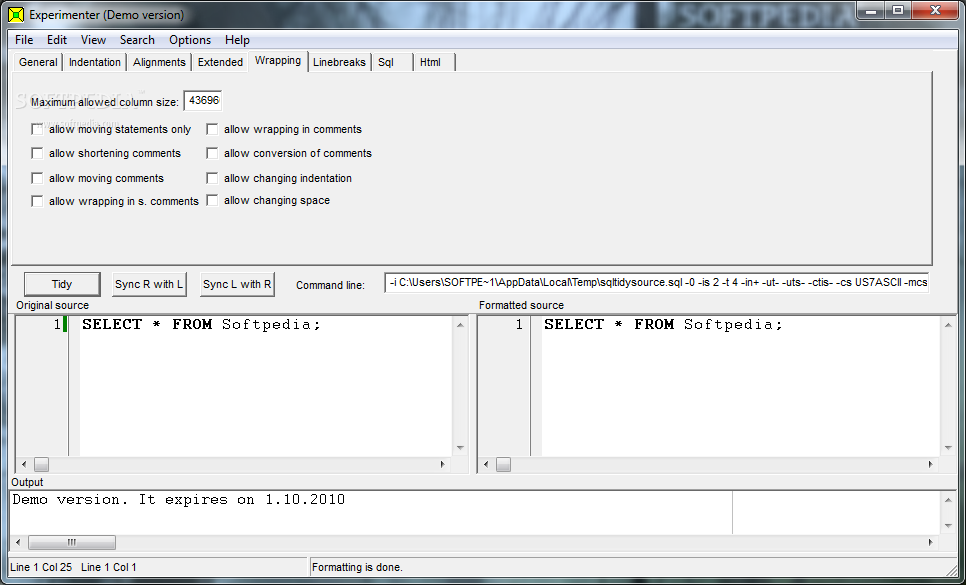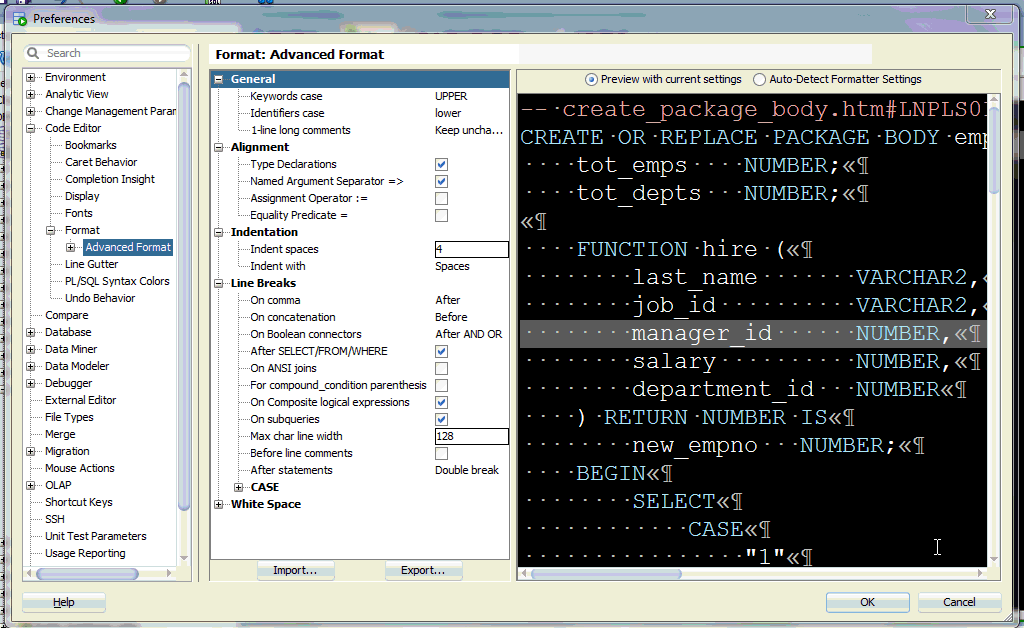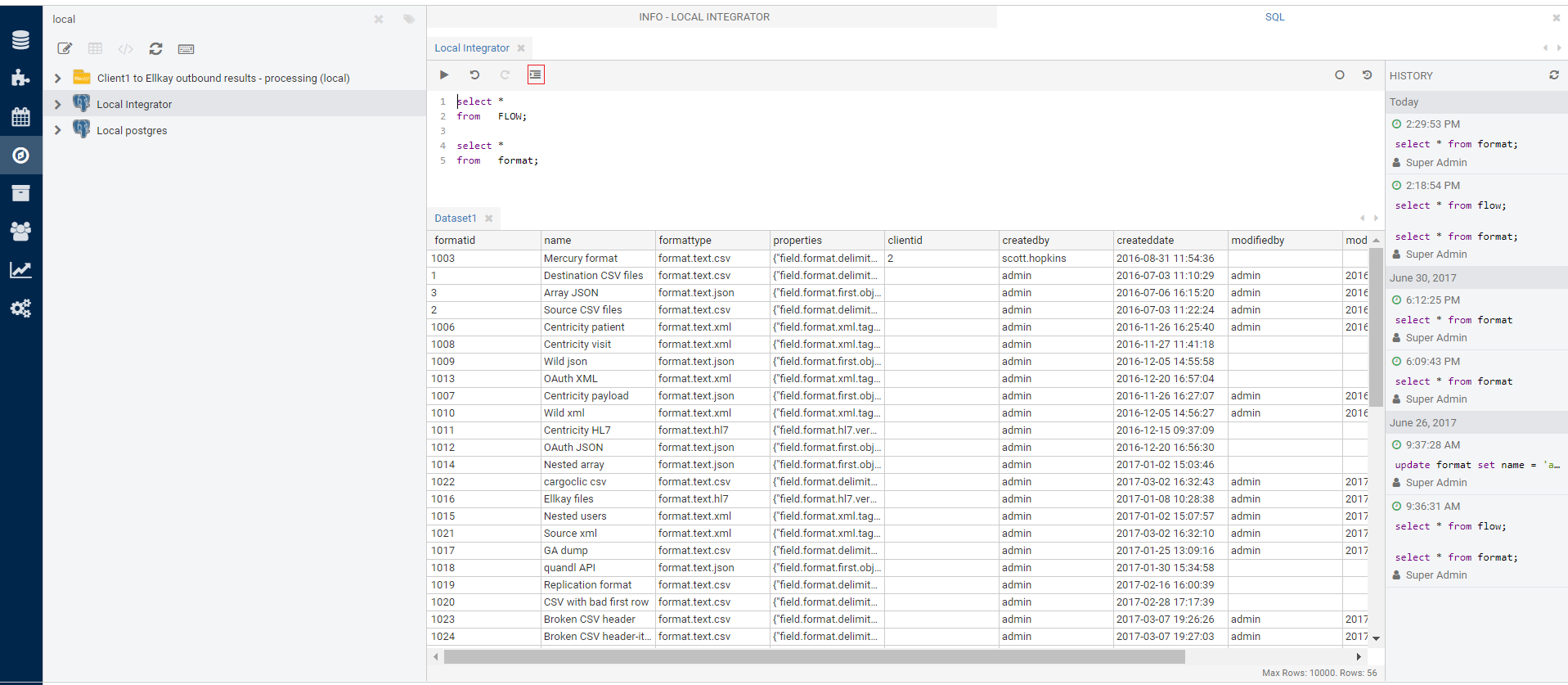

- #Sql formatter online access how to
- #Sql formatter online access full
- #Sql formatter online access code
The following example finds the average price and the sum of Internet sales for each day, grouped by order date and the promotion key. SELECT OrderDateKey, SUM(SalesAmount) AS TotalSalesīecause of the GROUP BY clause, only one row containing the sum of all sales is returned for each day. The following example finds the total amount for all sales on each day. The following example uses DISTINCT to generate a list of all unique titles in the DimEmployee table. SELECT FirstName, LastName, BaseRate, BaseRate * 40 AS GrossPay The following example returns all rows from the DimEmployee table, and calculates the gross pay for each employee based on their BaseRate and a 40-hour work week. Using SELECT with column headings and calculations This example returns only the rows for DimEmployee that have an EndDate that is not NULL and a MaritalStatus of ‘M’ (married). SELECT FirstName, LastName, StartDate AS FirstDay The third column heading is renamed to FirstDay.

This example returns all rows (no WHERE clause is specified) and a subset of the columns (FirstName, LastName, StartDate) from the DimEmployee table in the AdventureWorksPDW2012 database. This next example using table aliasing to achieve the same result.
#Sql formatter online access code
This first code example returns all rows (no WHERE clause is specified) and all columns (using the *) from the DimEmployee table. Using SELECT to retrieve rows and columns

Creating a new table using SELECTINTO also requires both the CREATETABLE permission, and the ALTERSCHEMA permission on the schema that owns the new table. Or requires membership in the db_datareader or db_owner fixed database roles, or the sysadmin fixed server role. Selecting data requires SELECT permission on the table or view, which could be inherited from a higher scope such as SELECT permission on the schema or CONTROL permission on the table. The actual physical execution of the statement is determined by the query processor and the order may vary from this list. However, they can be referenced by subsequent clauses such as the ORDER BY clause. Conversely, because the SELECT clause is step 8, any column aliases or derived columns defined in that clause cannot be referenced by preceding clauses. For example, if the query processor can bind to (access) the tables or views defined in the FROM clause, these objects and their columns are made available to all subsequent steps. This order determines when the objects defined in one step are made available to the clauses in subsequent steps. The following steps show the logical processing order, or binding order, for a SELECT statement. Logical Processing Order of the SELECT statement Some syntax restrictions apply to SELECT statements that involve remote tables. A four-part name cannot be specified for Azure SQL Database. SELECT statements are permitted in user-defined functions only if the select lists of these statements contain expressions that assign values to variables that are local to the functions.Ī four-part name constructed with the OPENDATASOURCE function as the server-name part can be used as a table source wherever a table name can appear in a SELECT statement. Any one of the optional clauses can be omitted, but when the optional clauses are used, they must appear in the appropriate order. The order of the clauses in the SELECT statement is significant. Syntaxĭue to the complexity of the SELECT statement, detailed syntax elements and arguments are shown by clause – The UNION, EXCEPT, and INTERSECT operators can be used between queries to combine or compare their results into one result set.
#Sql formatter online access full
The full syntax of the SELECT statement is complex, but the main clauses can be summarized as – Retrieves rows from the database and enables the selection of one or many rows or columns from one or many tables in SQL Server. We often are required to combine data from different sources, and one of the ways to achieve this in T-SQL is using set operators.
#Sql formatter online access how to
You also need to understand the structure of the SELECT statement and how to use its clauses to perform data manipulation tasks like filtering and sorting. For writing a correct and robust T-SQL code, it’s crucial to first understand the roots of the language, as well as a concept called logical query processing.


 0 kommentar(er)
0 kommentar(er)
